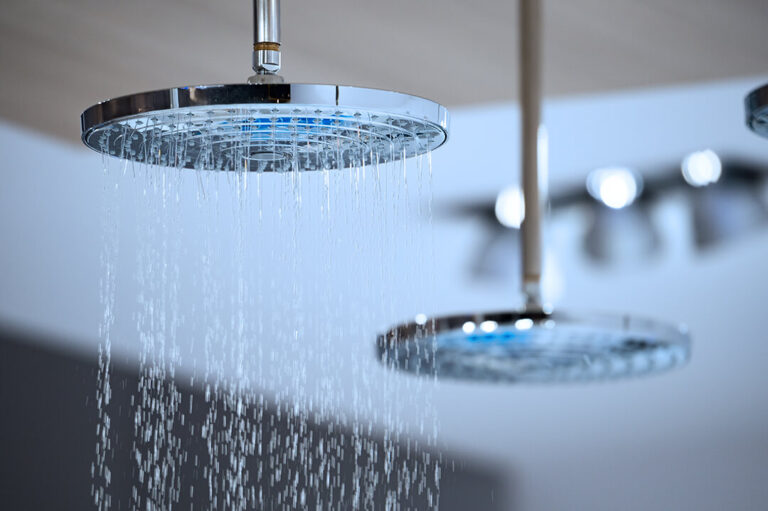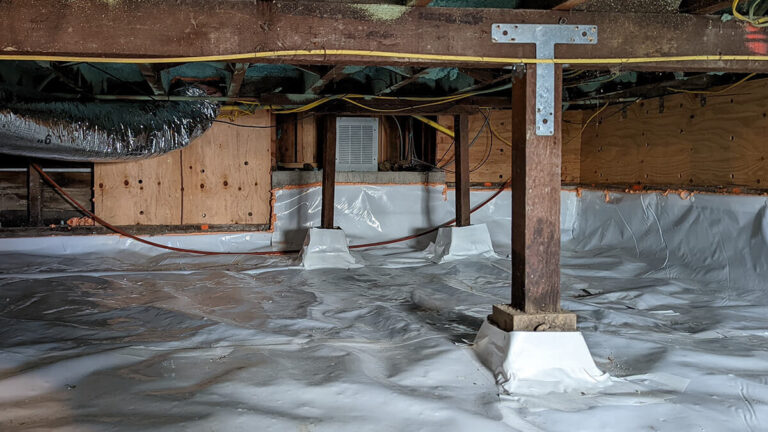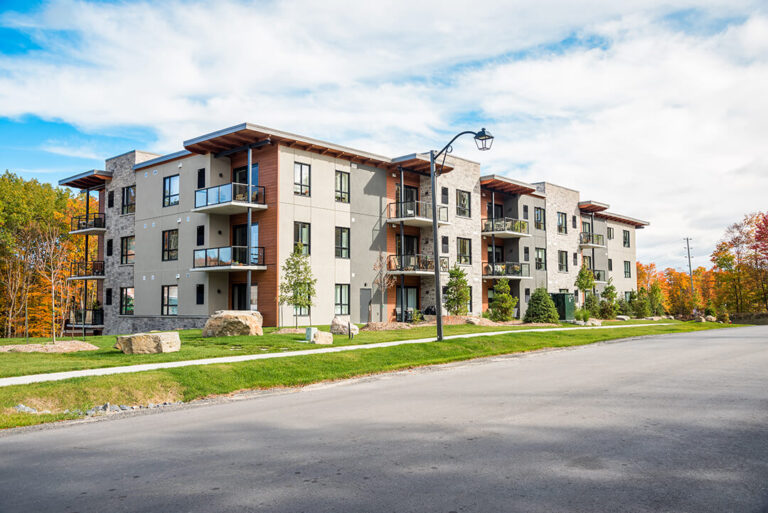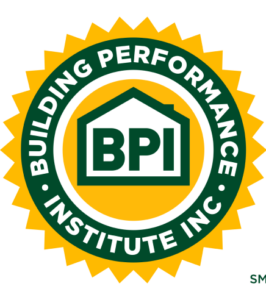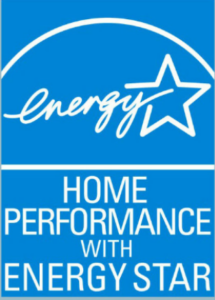Home Moisture Problems – Sources, Issues and Solutions 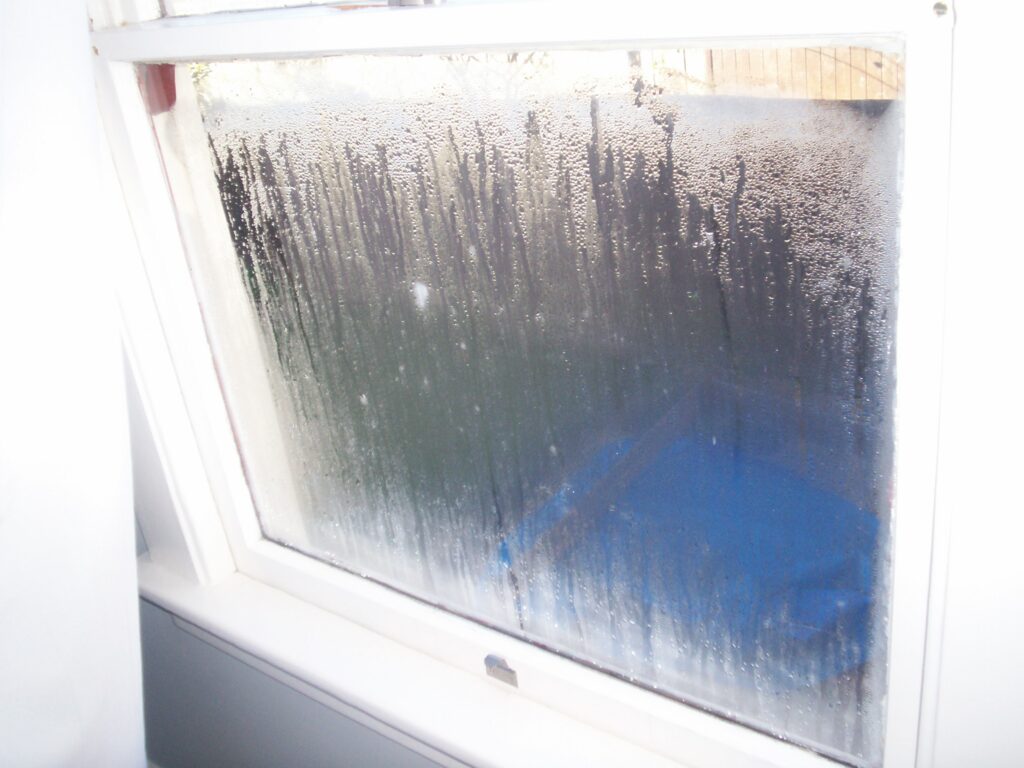 Even in California’s dry climate there are many homes with high humidity and moisture problems. This moisture could be coming from any number of sources and causing issues ranging from slight discomfort to musty smells to mold/mildew to indoor air quality concerns. This article will explain where the moisture could be coming from, the problems that the moisture can cause, ways to fix each respective issue, and how indoor air quality is related.
Even in California’s dry climate there are many homes with high humidity and moisture problems. This moisture could be coming from any number of sources and causing issues ranging from slight discomfort to musty smells to mold/mildew to indoor air quality concerns. This article will explain where the moisture could be coming from, the problems that the moisture can cause, ways to fix each respective issue, and how indoor air quality is related.
Sources of Moisture in a Home
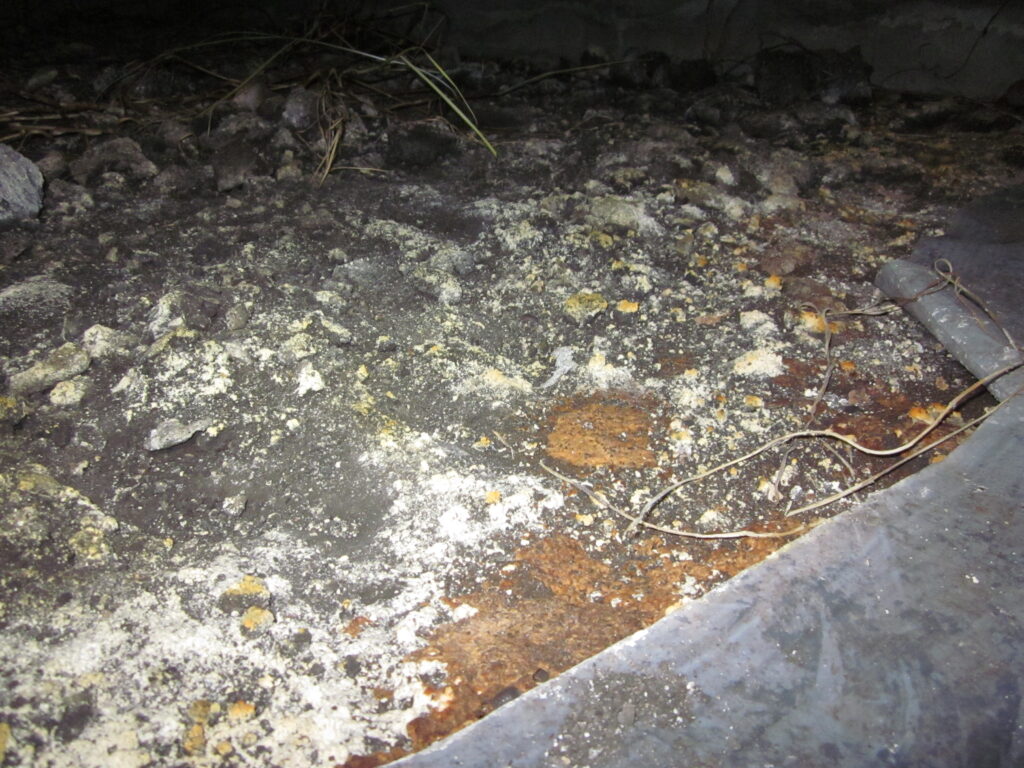
1) Crawlspace – The expression “out of sight, out of mind” applies well here. Not many homeowners want to take a thorough look at their crawlspace, and for good reason. It’s often filthy. It’s full of rat waste, moisture, mold, fungus and piles of miscellaneous goo that make people say “what….is that stuff?”. Crawlspace moisture can come from either the soil itself (common) or bulk water from irrigation or seasonal rainstorms. The crawlspace moisture that makes it’s way into the house from the crawlspace comes hand-in-hand with dirty crawlspace air.
2) Showers, Laundry, Cooking etc. – Although these vary greatly with habits, on average they are significant sources of moisture. Laundry can add 1 lb. of water to the air for each load of clothing. A shower, on average, adds .5 lb./shower and a bath adds .12 lb./bath. Cooking with gas appliances can add 4.7 lb./day and 2 lb./day for electric stovetops and ovens.
3) Breathing – Just by breathing occupants of a home add 2.88 lb./day / person. Upon exhaling, our breath contains a great deal of moisture.
4) Malfunctioning gas appliances – When gas is burnt (undergoes combustion), water vapor is produced as a byproduct (along with other undesirable waste gases including Carbon Monoxide). These humid waste gases are supposed to naturally draft out the vent/flue to the outside. This is not always the case. Often times there can be a high negative pressure in the home that causes the appliance to “backdraft”. In this case the waste gases spill out into the home. Sometimes it only backdrafts into the home partially. The concern here that is more pressing than the moisture is the carbon monoxide (CO). CO is an odorless, invisible gas that can be very harmful to people either in large concentrations or low concentrations over a long period of time.
5) Miscellaneous – Mopping, houseplants, pets, aquariums, humidifiers etc.
Moisture & Indoor Air Quality – Problems
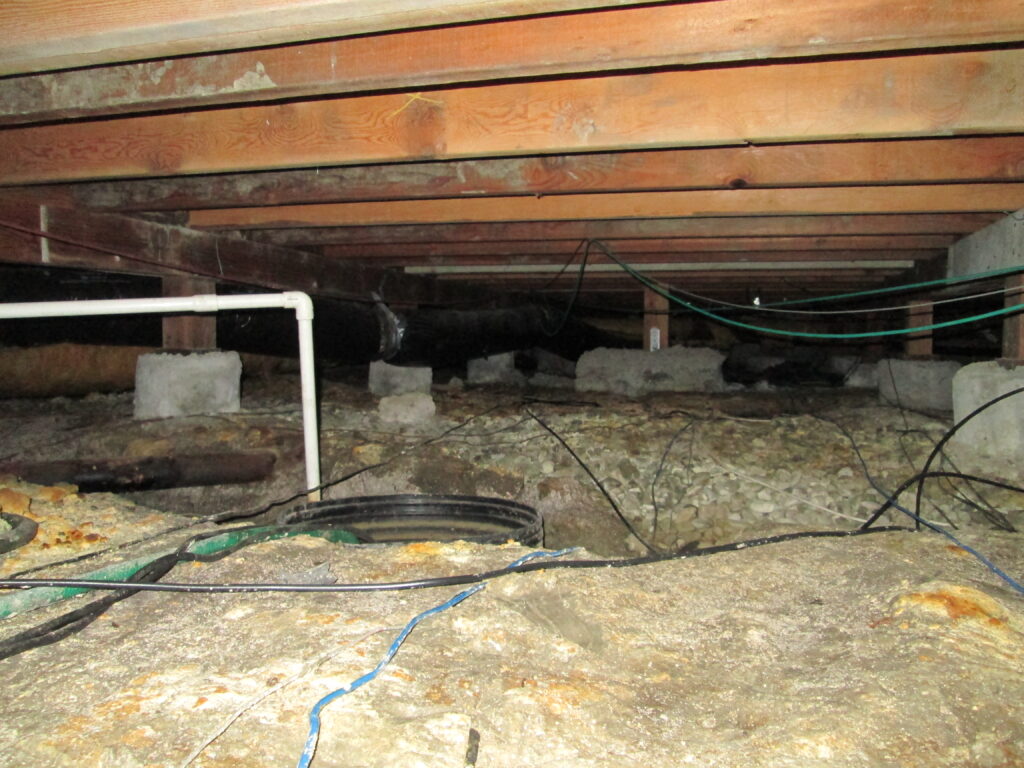
1) Crawlspace Moisture – Regardless of the source of crawlspace moisture (bulk water and/or coming from the soil), a humid crawlspace can cause some serious moisture issues. Foul odors, mold, mildew, rot, fungi are all issues that can do damage to the home and/or be hazardous to human health. Mold, bacteria and dust mites have been linked to triggering asthma attacks and allergies or cause children to develop these issues. Wood and sheetrock/drywall can decay and rot. Floor insulation in a moist crawlspace can cause condensation on the wood framing and can lead to rot. Lastly, homes were not and still are not built to be even close to air tight. Every house, unless intentionally and properly sealed, has leakage from the crawlspace (and attic) into the home itself. This is not something you want to be breathing in on a daily basis.
2) Exhaust Fan Problems – This includes issues associated with bathroom exhaust fans, kitchen range hood exhausts, laundry exhaust ceiling fans and dryer exhaust. Here is a quick list of very common issues: a) bathroom fans should be exhausting at 80-100 CFM (cubic feet per minute) but the average is closer to 20, b) the exhaust ducts (tubes) are often undersized and uninsulated, c) they are too loud, d) they are sometimes not vented all the way outside but instead end just short, e) high wattage, and f) no timers are installed for the fans. Read more in-depth about this here. Moisture from these sources can lead to peeling/blistering paint, drywall rot, warped wood framing or flooring, and just an overall high home humidity.
3) Window condensation – Humidity is never more obvious than when condensation occurs on the inside of a window. The warm humid air meets the cold, presumably single pane, window and condenses. This can cause damage to the window framing and the wood framing.
Moisture & Indoor Air Quality – Solutions
1) Crawlspace Vapor Barrier/Sealing – Also often known as Crawlspace Encapsulation. This involves putting solving crawlspace moisture and indoor air quality issues by putting down a sealed 15 mil thick polyethylene plastic barrier on the crawlspace soil and then sealing up the entire crawlspace. The sheets of the polyethylene barrier should be continuous and sealed to the adjacent sheet. It should also be run up the foundation walls and all of the piers and then sealed. The idea is that the soil can no longer interact with the crawlspace air and therefore cannot get into the home, cause moisture issues in the crawl itself or contribute to poor indoor air quality anywhere. This is a very effective means of getting rid of rodent problems in the crawl, eliminating rot/fungus/mold, eliminating moisture from the soil and saving energy as well.
[nggallery id=23]
The Crawlspace is often then “encapsulated”. This means that the crawlspace vents to the outside are completely sealed off, and the ceiling of the crawlspace is completely sealed as well so air is far less likely to interact with the home. The whole crawlspace becomes almost a conditioned space. This reduces the temperature difference from the crawlspace to the inside of the home, and therefore saves energy. It is a huge added benefit when the duct system is in the crawlspace as well.
The Vapor Barrier is to take care of moisture coming from the soil and not inches of bulk water coming from irrigation, or poor drainage. If there is flooding issues in the crawlspace, they should be taken care of first, or at the same time, as installing a vapor barrier. This is done by installing french drains, making sure the gutters carry water at least several feet from the home, and installing a crawlspace sump pump. There are sump pumps specifically compatible with vapor barriers and they should be installed simultaneously so that the plastic sheeting can be sealed to the sump pump on top. Once encapsulated, it is often prudent to install a low wattage exhaust fan in the crawlspace that is on a humidstat (turns on automatically when a certain humidity is reached).
2) Proper Installation of Exhaust Fans – This lists out solutions to the issues described above having to do with bathroom fans, kitchen range hoods etc. When installing any exhaust fan it should: a) be fully vented to the outside and not just inside the attic, b) tested by the contractor with a device that quantitatively measures CFM (80-100 CFM for a bathroom), c) be low wattage and have an ECM fan motor, d) be sealed where it meets the attic, e) have insulation around the exhaust duct, f) have a timer installed, and g) be virtually silent while running. Most kitchen range hoods are more than adequate (sometimes too powerful). Just make sure to use it while cooking.
3) Air Conditioning – Air Conditioners remove humidity from a living space. It wouldn’t be cost effective to have it running simply to dehumidify however. If the thermostat is turned so low to force an AC to kick on to take care of winter time moisture issues then you run the risk of your AC coils freezing and having to replace the whole system. Dehumidifiers that are connected to the whole house duct system are also not a recommendation. They are bulky, costly to install and inefficient to run. Both AC and Dehumidifiers are not solutions and they do not take care of the root of the problem.
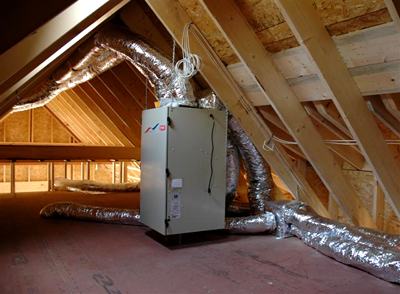
4) Energy Efficient Ventilation Systems (HRVs)– A more permanent and fully effective solution is to install a full house energy efficient balanced ventilation system to supply fresh air and exhaust the old. This seems a little counter productive at first glance because you’ve just sealed up your home and now you are pumping in outside air?? Well, there are very energy efficient ways to do this that will bring in “pre-warmed” fresh air from the outside in the wintertime. This method involves installing a ventilation system called a Heat Recovery Ventilator (HRV). This is a balanced form of ventilation that exhausts old air AND supplies fresh. The thing that makes it energy efficient is a rather ingeniously designed box that acts as a heat exchanger. All the supply air and exhaust air run through this box but the two air streams never are allows to mix or come in actual contact. Instead, the warm exhaust air transfers a large portion of it’s heat to the incoming cold fresh air by means of fine metal fins that the air is pushed through. Read more in-depth on this subject here.
5) Windows – Yes, upgrading to double pane windows will reduce or eliminate window condensation issues. However, besides the fact that they are costly, they are not really taking care of the root humidity problem. They are just making the water that is already in the air less likely to condense on that specific surface. Just like #3 on this list, this is not a recommended solution.
Get in contact:
For more information about home moisture/humidity solutions and indoor air quality, call (925) 363-4498 to speak to a technician or schedule an Energy Audit. You can also e-mail: info@epbuilders.com
Read our Testimonials from happy homeowners!
Photos of the variety of Home Performance Services we provide on a weekly basis:
[nggallery id=27]




